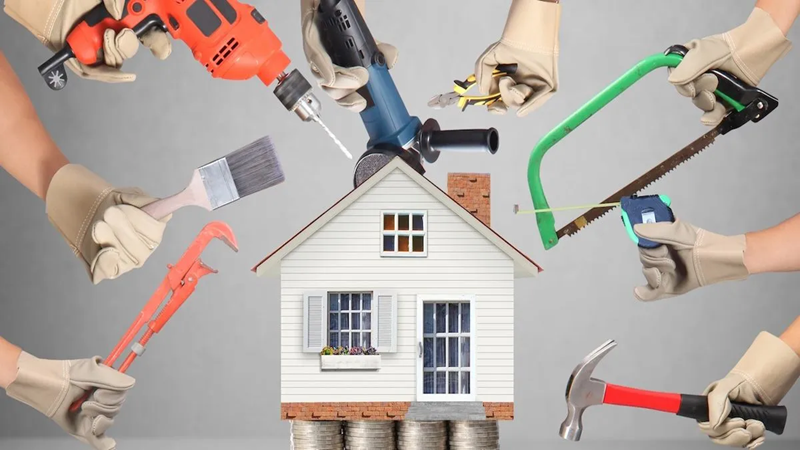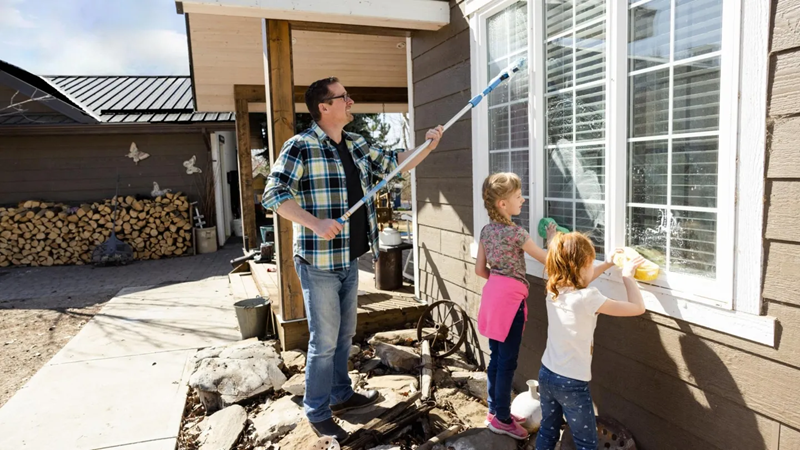A home is more than four walls and a roof—it’s a place of comfort, security, and peace. Yet, keeping a home in excellent condition often feels overwhelming. From leaky faucets and drafty windows to outdated fixtures and worn-out flooring, small issues can quickly pile up and create stress. That’s why having a clear Stress-Free Home Care: Repairs and Upgrades Guide is essential for every homeowner.
This article provides a detailed roadmap to maintaining your home efficiently, addressing common repair needs, planning practical upgrades, and ensuring your living space stays safe, comfortable, and valuable for years to come.
Why Home Care Matters
A well-maintained home not only looks appealing but also protects your investment. Regular repairs prevent small problems from turning into costly disasters. Upgrades, on the other hand, keep your property functional, modern, and energy-efficient. Together, they create a stress-free environment where you can truly relax.
Key reasons why home care should be a priority:
-
Financial Savings – Fixing minor issues early prevents expensive repairs later.
-
Health and Safety – Proper maintenance ensures clean air, safe wiring, and a secure structure.
-
Property Value – Well-kept homes command higher resale value.
-
Comfort – Upgrades enhance daily living, making your space more enjoyable.
Common Home Repairs Every Homeowner Faces

No matter how new or old a property is, maintenance is unavoidable. Here are the most common repairs you’ll likely encounter:
1. Plumbing Problems
-
Leaky faucets, running toilets, or clogged drains waste water and increase utility bills.
-
Quick fixes include tightening connections or replacing washers. For major leaks, professional help is best.
2. Electrical Issues
-
Flickering lights, faulty outlets, or tripped breakers are signs of electrical problems.
-
Routine inspection by an electrician prevents hazards.
3. Roofing Repairs
-
Missing shingles, water stains on ceilings, or mold indicate roof issues.
-
Annual roof inspections help extend lifespan and prevent leaks.
4. HVAC Maintenance
-
Dirty filters, poor airflow, or unusual noises reduce efficiency.
-
Seasonal tune-ups keep heating and cooling systems in top shape.
5. Structural Cracks
-
Small cracks in walls or foundations should be monitored.
-
Timely repairs prevent costly structural damage.
Essential Home Upgrades for Comfort and Efficiency

Upgrades not only improve aesthetics but also increase your home’s energy efficiency and value.
1. Kitchen Upgrades
-
Modern appliances save energy and water.
-
Updated countertops and cabinets improve functionality.
2. Bathroom Renovations
-
Low-flow toilets and faucets reduce water bills.
-
Heated flooring and walk-in showers add luxury.
3. Energy-Efficient Windows and Doors
-
Double or triple-pane windows reduce drafts.
-
Proper sealing lowers heating and cooling costs.
4. Smart Home Technology
-
Smart thermostats, lighting, and security systems increase convenience and safety.
5. Outdoor Improvements
-
Decks, patios, and landscaping boost curb appeal.
-
Energy-efficient exterior lighting enhances security.
Seasonal Home Care Checklist

Breaking down maintenance by season keeps tasks manageable.
Spring
-
Inspect roof after winter storms.
-
Clean gutters and downspouts.
-
Service air conditioning system.
Summer
-
Check deck or patio for repairs.
-
Inspect plumbing for leaks.
-
Test smoke and carbon monoxide detectors.
Fall
-
Service heating system.
-
Clean fireplace and chimney.
-
Seal gaps around windows and doors.
Winter
-
Insulate pipes to prevent freezing.
-
Clear snow from walkways and roofs.
-
Monitor indoor humidity to prevent mold.
Stress-Free Approach to Home Care
Home maintenance becomes stressful when approached without a plan. Here are strategies to make the process smooth and efficient:
-
Create a Maintenance Schedule – Plan monthly, seasonal, and annual tasks.
-
Budget for Repairs and Upgrades – Set aside 1–3% of your home’s value yearly.
-
DIY vs. Professional Help – Learn to handle minor fixes but call experts for complex issues.
-
Keep Tools Handy – A well-stocked toolbox reduces frustration.
-
Use Home Maintenance Apps – Digital reminders help you stay on track.
Cost-Effective Home Maintenance Tips
-
Preventive Care Pays Off – Regular cleaning and inspections save money long term.
-
Energy Savings – Switch to LED lighting, seal air leaks, and use smart thermostats.
-
Reuse and Refinish – Repaint cabinets or refinish floors instead of full replacements.
-
Shop Smart – Buy appliances during seasonal sales.
Benefits of a Stress-Free Home Care Plan
-
Peace of Mind – You know your home is safe and functional.
-
Higher Property Value – Well-maintained homes attract buyers.
-
Lower Stress – A clear plan reduces the feeling of being overwhelmed.
-
Healthier Living Environment – Clean air, safe wiring, and proper plumbing promote wellness.
Professional Services vs. DIY Repairs
While many homeowners prefer DIY for cost savings, some jobs require professional expertise.
Best DIY Tasks:
-
Painting walls.
-
Fixing minor leaks.
-
Installing shelves or curtain rods.
Best Left to Professionals:
-
Electrical rewiring.
-
Major plumbing repairs.
-
Roofing replacement.
-
Structural work.
Knowing when to call a professional is crucial for safety and quality.
The Role of Technology in Modern Home Care

Technology has revolutionized how homeowners manage repairs and upgrades:
-
Smart Sensors – Detect leaks, smoke, or unusual activity.
-
Home Maintenance Apps – Track tasks and schedules.
-
Virtual Consultations – Get expert advice without in-person visits.
-
Energy Monitoring Devices – Track consumption and suggest savings.
Long-Term Planning for Stress-Free Living
Creating a 5–10 year maintenance and upgrade plan ensures your home stays modern and safe. Include:
-
Roof replacement timeline.
-
HVAC system lifespan.
-
Flooring and painting refresh cycles.
-
Planned upgrades like solar panels or new landscaping.
By anticipating major projects, you spread out costs and avoid sudden financial strain.
Conclusion
Maintaining a home doesn’t have to be overwhelming. With proper planning, budgeting, and the right mix of DIY and professional help, you can create a safe, comfortable, and beautiful environment for yourself and your family. A structured Stress-Free Home Care: Repairs and Upgrades Guide gives you the tools to stay ahead of problems, embrace modern upgrades, and truly enjoy your home without unnecessary stress.
Ultimately, your home is an investment—caring for it with diligence and foresight ensures it continues to be a source of comfort, security, and pride for years to come.

